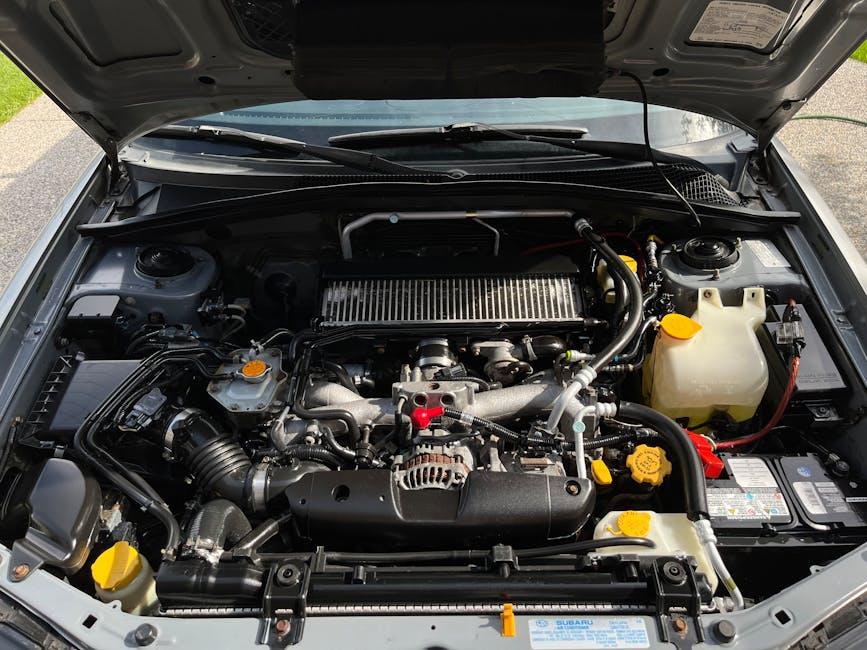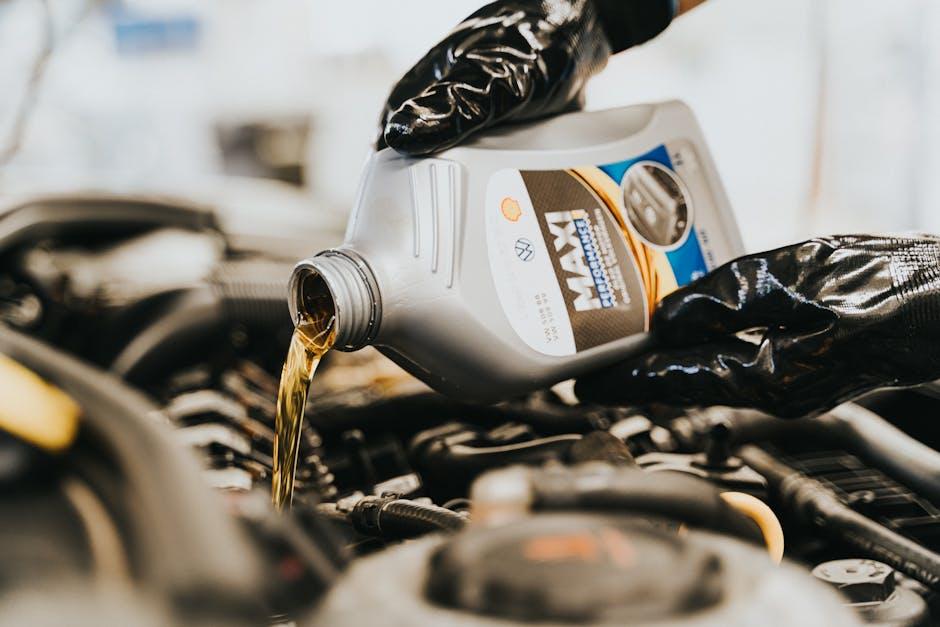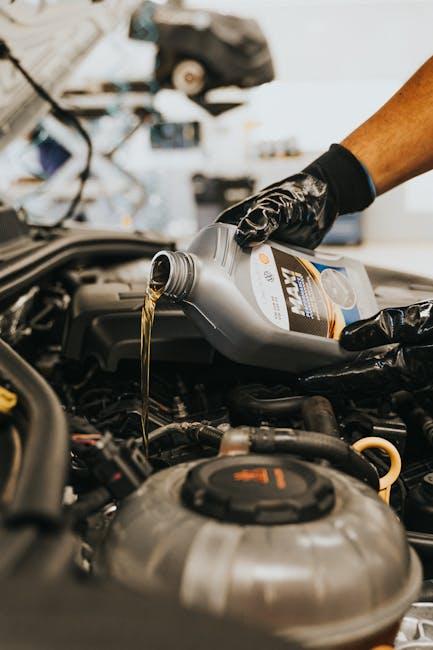Every engine tells a story—a saga of power, motion, and endurance. At the heart of this mechanical ballet lies a humble yet heroic element: engine oil. Acting as the lifeblood of your vehicle, it tirelessly lubricates, cools, and protects countless components as they work in perfect harmony. But like any vital resource, engine oil doesn’t last forever. Knowing how often to change it is key to ensuring your engine’s longevity and peak performance. In this article, we’ll explore the factors that influence oil change intervals and help you strike the perfect balance between care and efficiency.
Table of Contents
- Understanding the Role of Engine Oil in Vehicle Performance
- Factors Influencing the Frequency of Oil Changes
- Symptoms That Indicate Your Engine Oil Needs Replacing
- Comparing Conventional, Synthetic, and High-Mileage Oils for Change Intervals
- Expert Recommendations for Different Driving Conditions
- Tips for Monitoring Oil Quality and Maintaining Engine Health
- Q&A
- In Summary

Understanding the Role of Engine Oil in Vehicle Performance
Engine oil is the lifeblood of your vehicle’s engine, lubricating the myriad of moving parts to reduce friction and prevent wear and tear. It also plays a critical role in cooling the engine by carrying heat away from the combustion chamber, as well as helping to clean and protect engine components from corrosion and sludge buildup. Without proper lubrication, the engine can overheat, parts can grind against each other, and overall performance will drastically decline, potentially leading to costly repairs.
Choosing the right engine oil and maintaining adequate oil levels can significantly enhance your vehicle’s efficiency and longevity. Here are some key functions that engine oil performs:
- Lubrication: Creates a protective film between engine parts to minimize friction.
- Heat Dissipation: Transfers excess heat away from engine components to maintain optimal temperature.
- Contaminant Removal: Carries away dirt, metal particles, and combustion byproducts to the oil filter.
- Corrosion Protection: Contains additives that neutralize acids and prevent rust.
| Engine Oil Property | Benefit to Engine |
|---|---|
| Viscosity | Smooth flow under different temperatures |
| Additives | Enhanced wear and corrosion resistance |
| Detergent | Keeps engine clean and free of deposits |

Factors Influencing the Frequency of Oil Changes
Several variables play a crucial role in determining how frequently you should change your engine oil, ensuring your vehicle maintains optimal performance. Driving habits are a significant consideration—frequent short trips or stop-and-go traffic cause your engine to work harder, necessitating more frequent oil changes. Similarly, harsh environmental conditions such as extreme temperatures, dusty roads, or heavy pollution can accelerate oil degradation. Vehicle age and engine type also matter; older engines or those with high mileage may need more regular oil updates to keep components properly lubricated and prevent wear.
Additionally, the type of oil you use influences change intervals. Modern synthetic oils often last longer than conventional ones due to their enhanced molecular stability. Below is a simple guide contrasting key factors and their impact on oil change frequency:
| Factor | Impact on Oil Change Frequency |
|---|---|
| Driving Style | Frequent stop-and-go requires more frequent oil changes |
| Environment | Dust, heat, and pollution shorten oil life |
| Engine Age | Older engines may need oil changed more often |
| Oil Type | Synthetic oils extend intervals between changes |

Symptoms That Indicate Your Engine Oil Needs Replacing
When your engine oil begins to degrade, your vehicle may start displaying subtle signs that something’s off. One common symptom is a noticeable drop in engine performance — such as sluggish acceleration or rough idling. Additionally, if you catch an unusual burning smell inside or around the engine, it could be a warning sign that the oil has lost its protective properties and is no longer lubricating efficiently. Keep an eye on the color and texture as well; fresh oil is amber and transparent, but old oil turns dark, gritty, and thick.
Some drivers also experience warning lights on their dashboard—specifically, the oil pressure or engine warning light may illuminate when it’s time to act. Precise symptoms include:
- Engine overheating more frequently
- Increased engine noise or ticking sounds
- Decreased fuel efficiency despite no change in driving habits
- Oil level dropping quickly or frequent top-ups required
| Symptom | What It Indicates |
|---|---|
| Dark, gritty oil | Contaminated, lost lubrication |
| Dashboard oil light | Low pressure or degraded oil |
| Burning smell | Oil overheating or leaking |
| Reduced performance | Inefficient engine friction control |

Comparing Conventional, Synthetic, and High-Mileage Oils for Change Intervals
When choosing between conventional, synthetic, and high-mileage oils, understanding their recommended change intervals is key to maintaining engine health without overspending. Conventional oils typically require more frequent changes, often between 3,000 to 5,000 miles, because they tend to break down faster due to their natural base oils. In contrast, synthetic oils boast enhanced molecular stability and superior additive packages, allowing you to extend the interval to 7,500 or even 10,000 miles depending on driving conditions. Meanwhile, high-mileage oils are specifically formulated for engines with over 75,000 miles; not only do they help reduce leaks and engine wear, but their change intervals often align closely with, or slightly exceed, those of synthetic oils due to their conditioning additives.
Here’s a quick glance at typical oil change intervals for each type:
| Oil Type | Recommended Interval (Miles) | Key Benefits |
|---|---|---|
| Conventional | 3,000 – 5,000 | Affordable, widely available |
| Synthetic | 7,500 – 10,000 | Longer-lasting, better protection |
| High-Mileage | 7,500 – 10,000 | Engine seal conditioners, wear reduction |
- Driving style and conditions can significantly influence these intervals—stop-and-go traffic or extreme temperatures warrant more frequent changes.
- Manufacturer recommendations should always be your primary guide, as oil formulations evolve and engine designs improve.

Expert Recommendations for Different Driving Conditions
Driving habits and environmental conditions dramatically influence how frequently you should change your engine oil. For instance, if you often find yourself in stop-and-go city traffic, your engine endures more stress due to frequent idling and acceleration. In contrast, highway cruising typically subjects your engine to steady operation, which can be gentler on the oil. Consider the following guidelines for different scenarios:
- City Driving: Every 3,000 to 5,000 miles
- Highway Driving: Every 5,000 to 7,500 miles
- Off-Road or Severe Conditions: Every 3,000 miles or less
- Extreme Weather: More frequent checks and changes during harsh cold or heat
For those who want a quick reference, the table below summarizes expert advice tailored to common driving environments:
| Driving Condition | Recommended Oil Change Interval | Notes |
|---|---|---|
| Urban Stop-and-Go | 3,000 – 5,000 miles | More frequent due to engine idling and pollution |
| Consistent Highway | 5,000 – 7,500 miles | Longer intervals, steady engine load |
| All-Terrain/Off-Road | 3,000 miles or less | Heavy dust and debris accelerate oil degradation |
| Extreme Temperatures | Varies; frequent checks advised | Oil thickening or thinning impacts performance |

Tips for Monitoring Oil Quality and Maintaining Engine Health
Maintaining your engine’s health goes beyond simply following a fixed oil change schedule. Regularly checking the oil quality offers real-time insight into the engine’s condition and helps prevent costly repairs. Look for signs like a thick, darkened texture or strange odors in the oil, which can indicate contamination or breakdown of additives. Additionally, keeping an eye on your vehicle’s oil level using the dipstick can alert you to potential leaks or consumption issues early on.
Incorporating these simple habits into your routine can make a significant difference:
- Visual inspection: Check oil color and consistency monthly.
- Smell test: Be aware of burnt or metallic odors.
- Oil analysis: Consider professional lab tests to detect contaminants.
- Use manufacturer’s recommendations: Refer to your vehicle manual for oil types and intervals.
| Indicator | Cause | Action |
|---|---|---|
| Black & Sticky Oil | Oxidation & Contaminants | Schedule immediate oil change |
| Milky Appearance | Coolant contamination | Inspect engine gasket |
| Low Oil Level | Leaks or burning | Check for leaks & top-up |
| Burnt Smell | Overheating oil | Reduce engine load & change oil |
Q&A
Q&A: How Often Should You Change Your Engine Oil?
Q: Why is changing engine oil important?
A: Engine oil acts as the lifeblood of your car’s engine, lubricating its moving parts, reducing friction, and helping to keep it cool. Over time, oil breaks down and collects dirt and debris, which can harm your engine if not replaced regularly.
Q: What is the general rule of thumb for oil changes?
A: Traditionally, many drivers follow the “3,000 miles or 3 months” guideline. However, advances in engine technology and oil formulations mean this is often outdated. Most modern vehicles can safely go between 5,000 to 10,000 miles before needing an oil change.
Q: What factors affect how often I should change my oil?
A: Several factors play a role: your driving habits (stop-and-go city driving vs. highway cruising), environmental conditions (extreme cold or heat), the type of oil used (synthetic vs. conventional), and the car’s age and make.
Q: Is synthetic oil better for longer intervals?
A: Yes. Synthetic oils are designed to last longer and resist breakdown better than conventional oils, often allowing for extended intervals between changes — sometimes up to 15,000 miles depending on manufacturer recommendations.
Q: How can I know the best interval for my car?
A: Your vehicle’s owner’s manual is the most reliable source. Additionally, some modern cars come with oil life monitoring systems that alert you when it’s time for an oil change based on actual driving conditions.
Q: What happens if I wait too long to change my oil?
A: Delaying oil changes can lead to sludge buildup, reduced engine efficiency, overheating, and ultimately costly engine damage. Regular oil changes help keep your engine running smoothly and extend its lifespan.
Q: Can I check my oil myself to judge its condition?
A: Absolutely. Use the dipstick to check oil level and color. Fresh oil is amber and relatively clear; dark, gritty, or low oil signals it’s time for a change.
Q: In summary, how often should I change my oil?
A: Aim to follow your manufacturer’s recommendation, factoring in your driving conditions and oil type. For many, this means changing oil every 5,000 to 7,500 miles with conventional oil, or up to 10,000-15,000 miles with synthetic—keeping your engine happy and healthy.
In Summary
In the rhythm of your engine’s heartbeat, regular oil changes are the unsung cadence that keep the performance smooth and reliable. While the exact interval varies depending on your vehicle’s make, driving habits, and oil type, staying attentive to manufacturer recommendations and oil quality will always serve you well. Think of oil changes not just as maintenance, but as a renewal—fresh oil fuels longevity and safeguards the intricate dance of moving parts beneath the hood. So, whether you’re clocking miles on the highway or navigating city streets, let timely oil changes be your trusted ritual, ensuring your engine’s journey runs clean, efficient, and strong.

